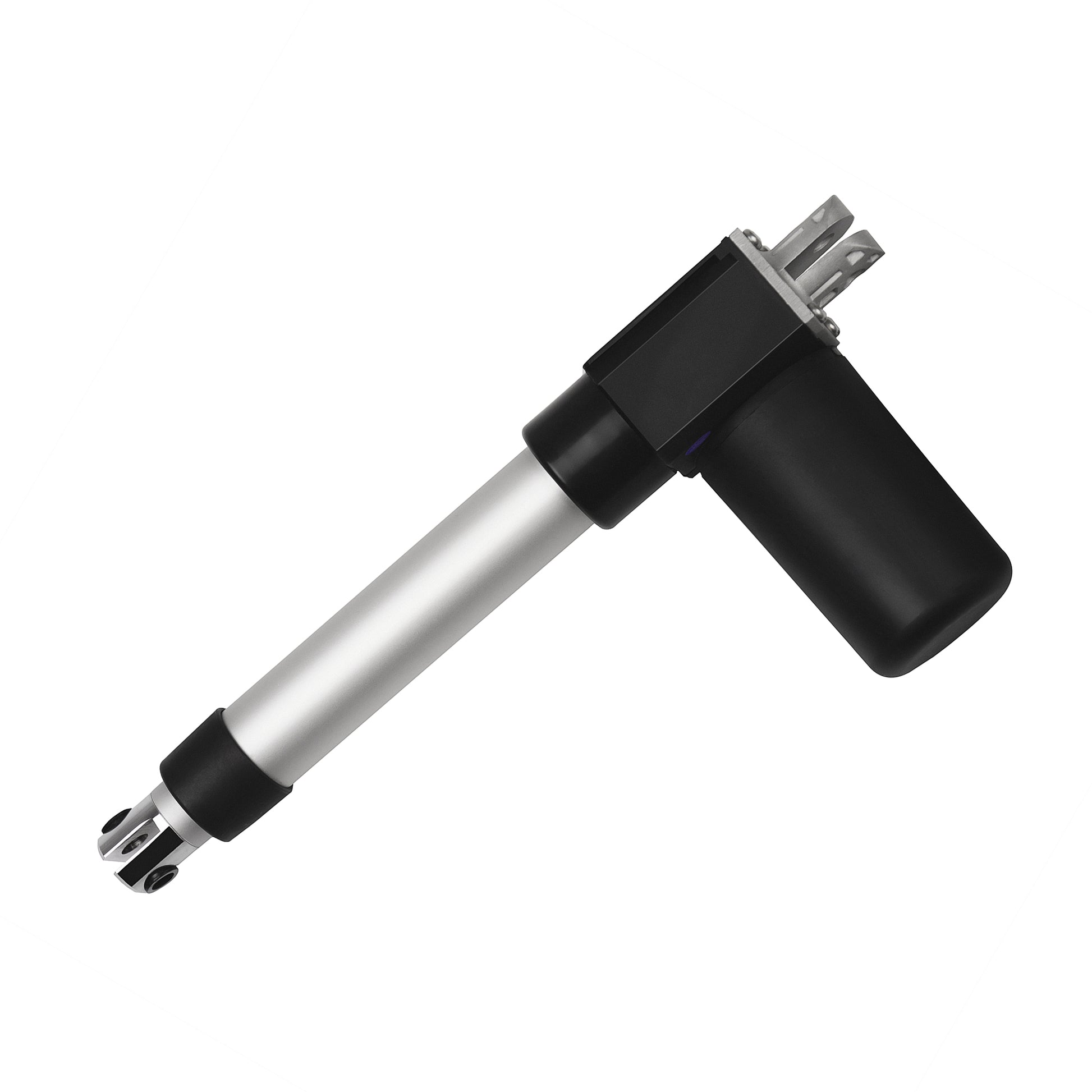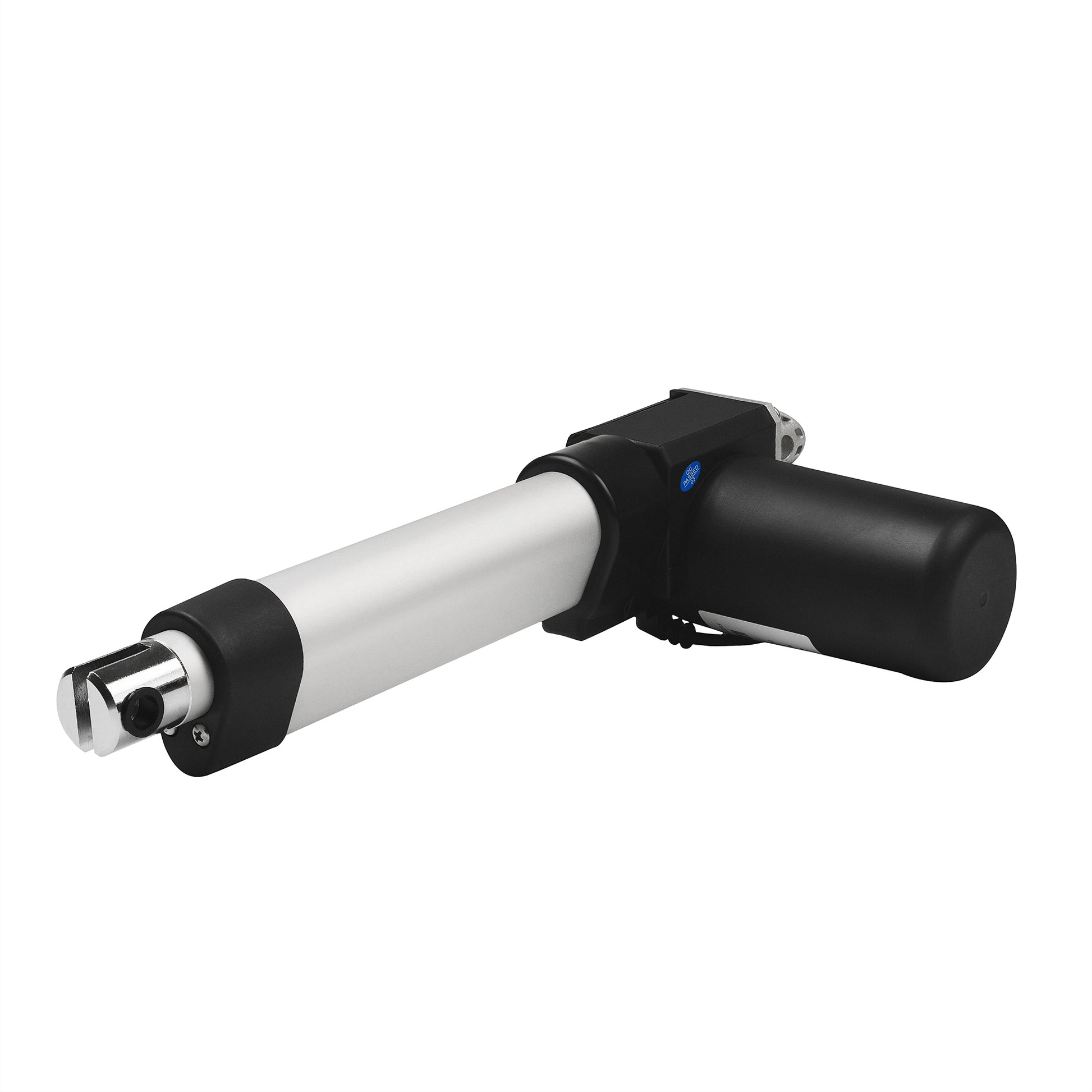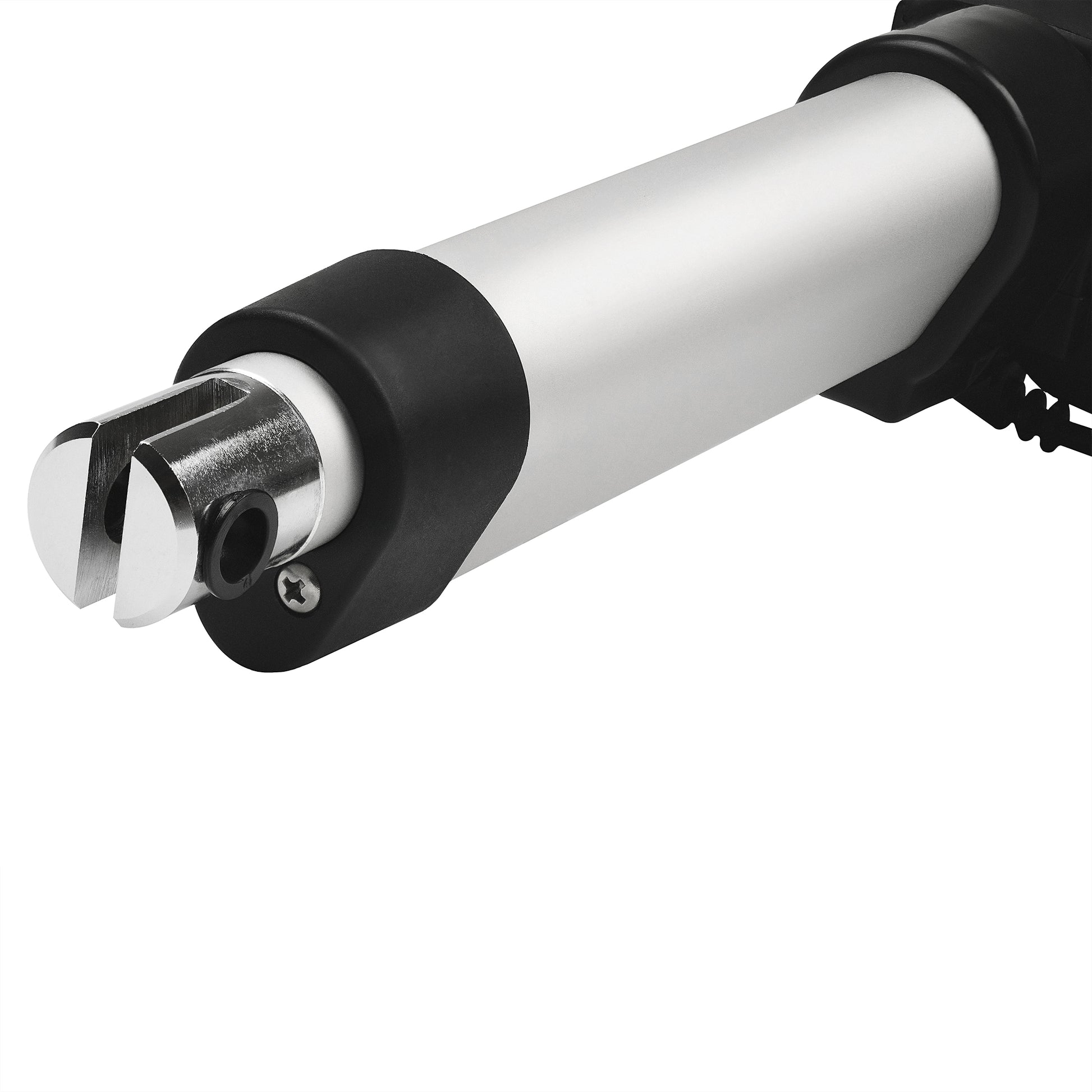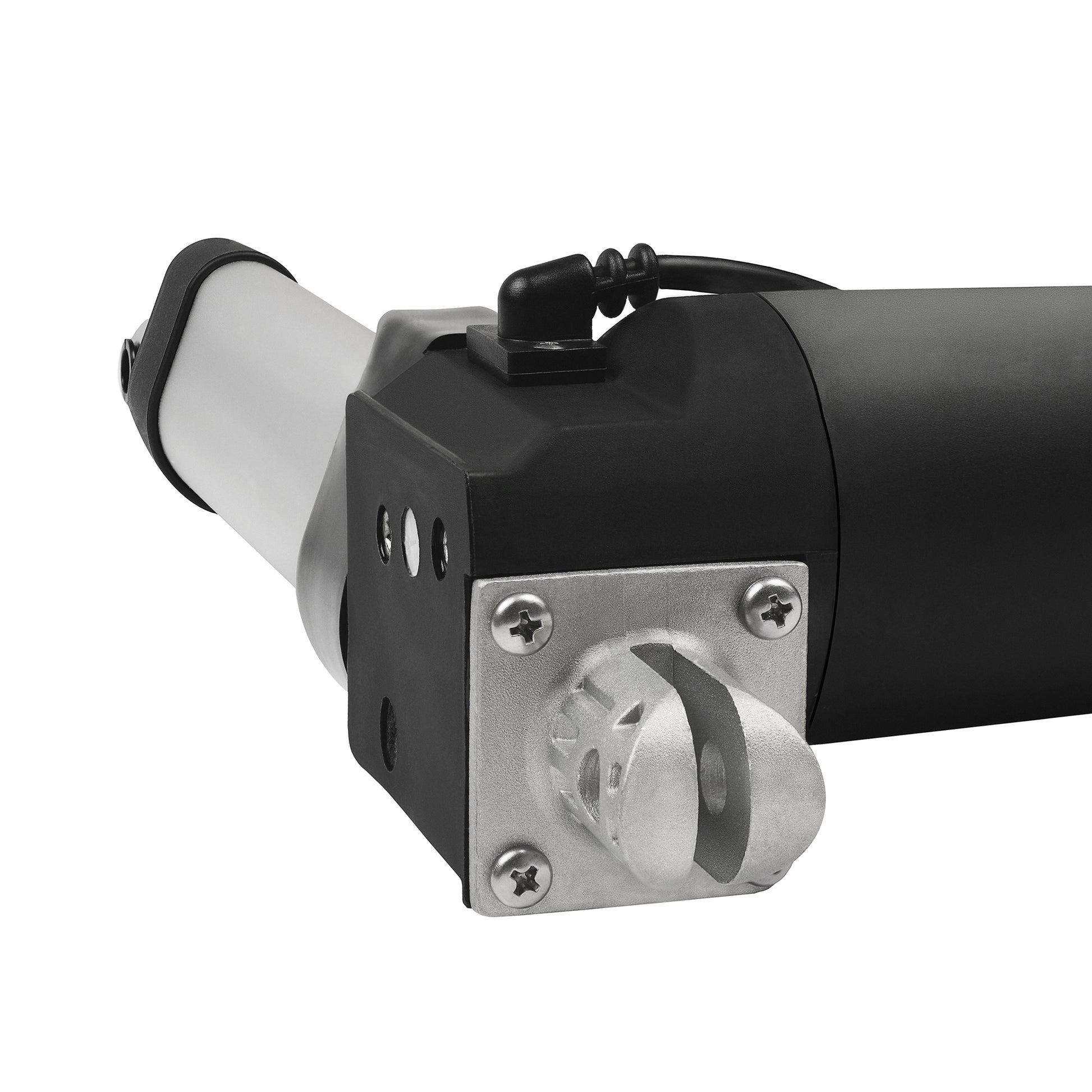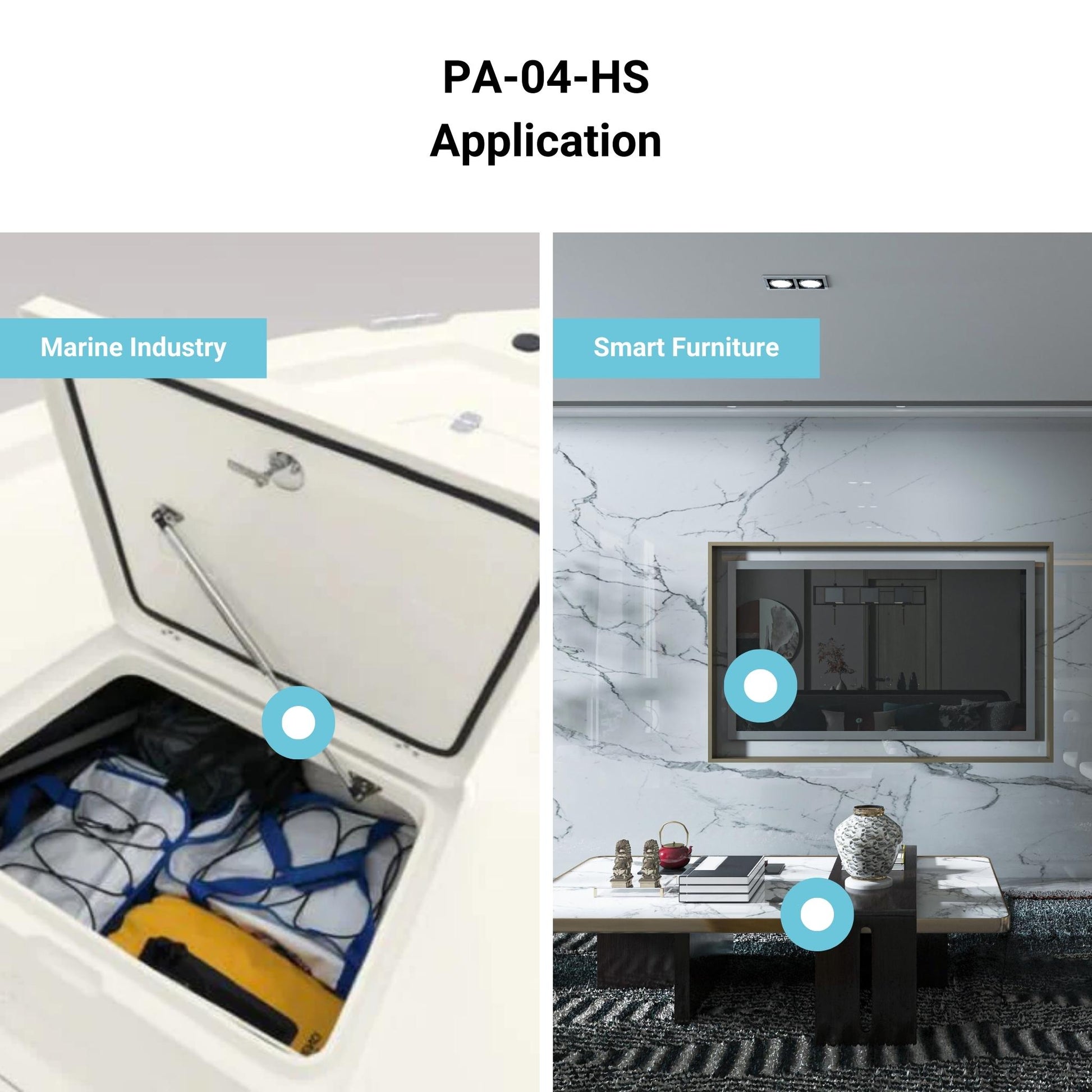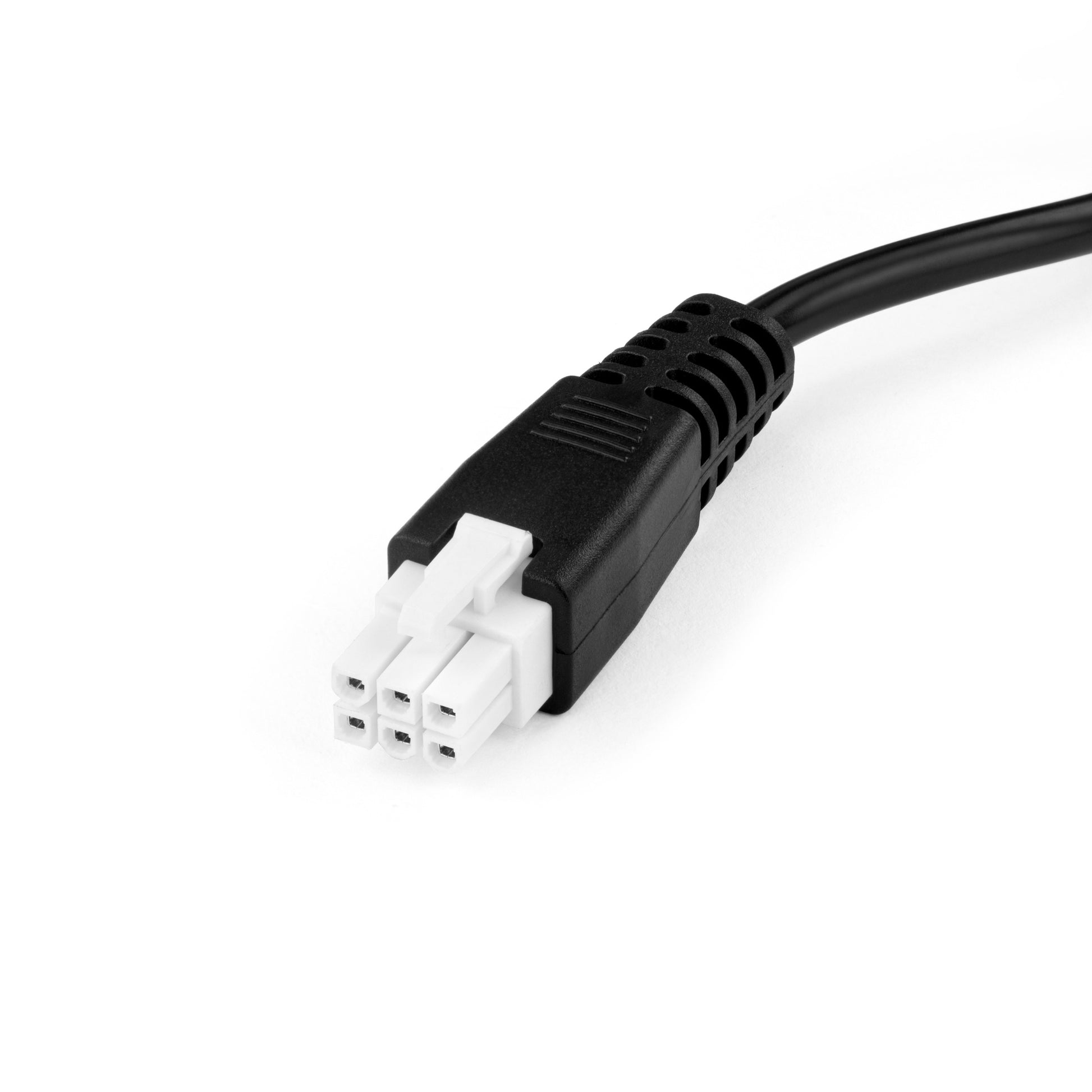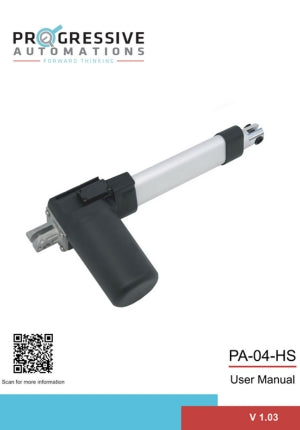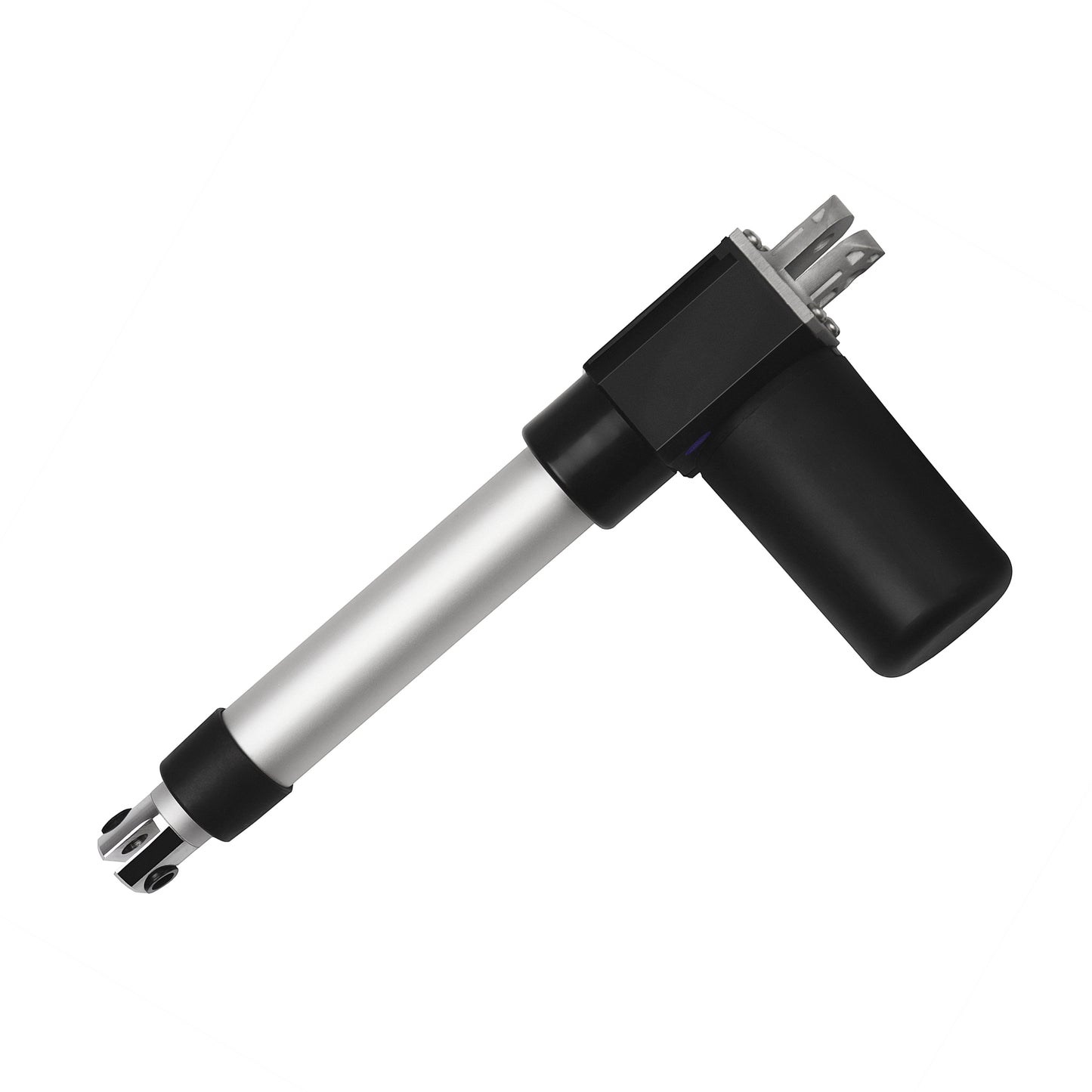






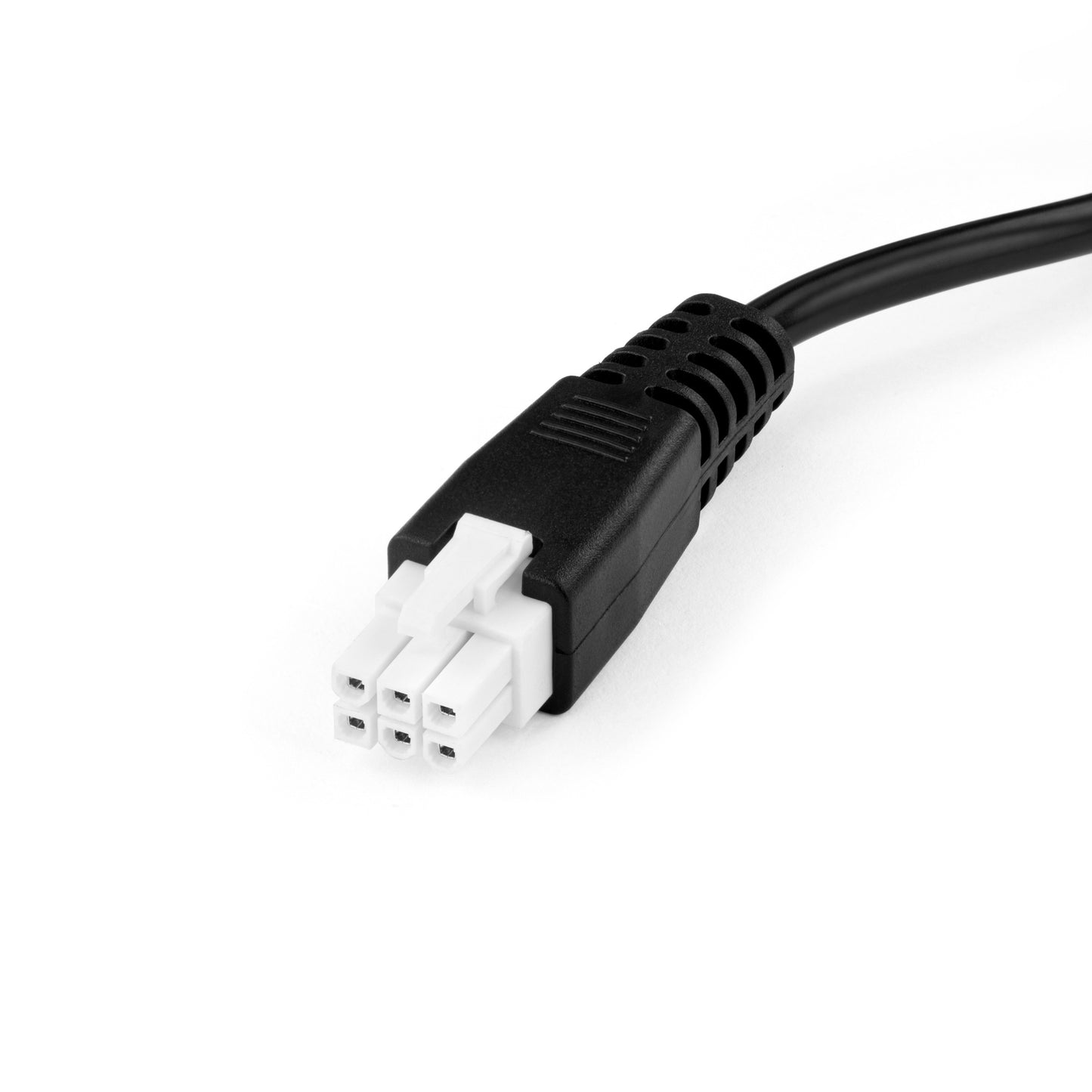
Le PA-04-HS utilise une rétroaction à effet Hall intégrée qui permet la synchronisation, le contrôle de la vitesse et la commande de position. La rétroaction à effet Hall est cruciale pour les applications où plusieurs actionneurs doivent se déplacer en synchronisation. Il se distingue des autres modèles par un indice de protection environnemental élevé, peu bruyant et un retour intégré. L'actionneur à effet Hall est conçu pour résister à la poussière et a une protection contre l'exposition à l'eau. Veuillez consulter notre Guide d'évaluation IP pour une explication détaillée des capacités du PA-04-HS.
Il est populaire dans la robotique, la fabrication, les meubles, la marine et la domotique. Pour une liste complète des spécifications, des options de personnalisation et des dessins dimensionnels, veuillez consulter notre fiche technique PA-04-HS.
OPTIONS DE FIXATION :
Le support BRK-01 en forme de T et le BRK-02 Les supports en forme de U sont conçus pour l'actionneur linéaire PA-04-HS. Pour des informations et des spécifications plus détaillées, veuillez consulter notre page de produits de supports.
SYSTÈMES DE CONMMANDE:
Le PA-04-HS est compatible avec le sans fil PA-40 boîtier de commande de capteur à effet Hall ainsi que le FLTCON à câble, série de boîtiers de commande. Pour plus d'informations sur nos boîtiers de commande plug-n-play et nos micro-contrôleurs de développement, veuillez consulter notre page systèmes de commande.
* Notre PA-04-HS, actionneur avec Les moteurs 24 VDC sont compatibles avec les PA-40-24VDC et Série FLTCON de boîtiers de commande pour plusieurs actionneurs qui doivent se déplacer à la même vitesse de manière synchronisée. Pour plus d'information veuillez contacter sales@progressiveautomations.com pour confirmer la compatibilité de ce produit avec les boîtiers de commande Progressive Automations.
Tableau de comparaison des actionneursOptions personnalisées
Vous recherchez un actionneur mais les spécifications ne correspondent pas exactement à ce dont vous avez besoin ? Nous avons une longue liste de capacités de personnalisation pour vous assurer d'obtenir exactement ce dont vous avez besoin pour votre projet. Téléchargez la fiche technique de ce produit et découvrez vos options de personnalisation !
Le PA-04-HS utilise une rétroaction à effet Hall intégrée qui permet la synchronisation, le contrôle de la vitesse et la commande de position. La rétroaction à effet Hall est cruciale pour les applications où plusieurs actionneurs doivent se déplacer en synchronisation. Il se distingue des autres modèles par un indice de protection environnemental élevé, peu bruyant et un retour intégré. L'actionneur à effet Hall est conçu pour résister à la poussière et a une protection contre l'exposition à l'eau. Veuillez consulter notre Guide d'évaluation IP pour une explication détaillée des capacités du PA-04-HS.
Il est populaire dans la robotique, la fabrication, les meubles, la marine et la domotique. Pour une liste complète des spécifications, des options de personnalisation et des dessins dimensionnels, veuillez consulter notre fiche technique PA-04-HS.
OPTIONS DE FIXATION :
Le support BRK-01 en forme de T et le BRK-02 Les supports en forme de U sont conçus pour l'actionneur linéaire PA-04-HS. Pour des informations et des spécifications plus détaillées, veuillez consulter notre page de produits de supports.
SYSTÈMES DE CONMMANDE:
Le PA-04-HS est compatible avec le sans fil PA-40 boîtier de commande de capteur à effet Hall ainsi que le FLTCON à câble, série de boîtiers de commande. Pour plus d'informations sur nos boîtiers de commande plug-n-play et nos micro-contrôleurs de développement, veuillez consulter notre page systèmes de commande.
* Notre PA-04-HS, actionneur avec Les moteurs 24 VDC sont compatibles avec les PA-40-24VDC et Série FLTCON de boîtiers de commande pour plusieurs actionneurs qui doivent se déplacer à la même vitesse de manière synchronisée. Pour plus d'information veuillez contacter sales@progressiveautomations.com pour confirmer la compatibilité de ce produit avec les boîtiers de commande Progressive Automations.
Tableau de comparaison des actionneursOptions personnalisées
Vous recherchez un actionneur mais les spécifications ne correspondent pas exactement à ce dont vous avez besoin ? Nous avons une longue liste de capacités de personnalisation pour vous assurer d'obtenir exactement ce dont vous avez besoin pour votre projet. Téléchargez la fiche technique de ce produit et découvrez vos options de personnalisation !
Le respect d'un ensemble de normes est crucial pour les entreprises afin de s'assurer que leurs produits et services peuvent atteindre un niveau de qualité qui favorise la satisfaction de la clientèle. Chez Progressive Automations, nous ne visons que le meilleur pour nos clients et nous nous efforçons d'apporter des améliorations continues. Pour cette raison, nous sommes ravis d'annoncer que Progressive Automations est désormais certifié ISO 9001:2015 !
Une qualité à laquelle vous pouvez faire confiance – En savoir plusModèles 2D/3D

Modèles 3D
En fonction de votre application, vous devez prendre en compte différentes exigences techniques lors de la détermination de l' actionneur linéaire dont vous avez besoin. Ces exigences incluent la force, la course, la vitesse et les dimensions de montage. Pour des informations détaillées sur l'actionneur, vous pouvez vous référer soit à la fiche technique, soit au tableau des spécifications situé sur la page produit de l'actionneur sélectionné. Vous pouvez également nous contacter pour parler avec l’un de nos ingénieurs experts.
Le cycle de service est la fraction de la période de travail pendant laquelle un actionneur linéaire peut rester actif. Vous pouvez calculer le cycle de service d'un actionneur linéaire à l'aide de l'équation suivante : Cycle de service (%) = (Durée pendant laquelle l'actionneur linéaire est actif) / (Durée d'une période de travail)
Par exemple : avec un cycle de service de 25 %, un actionneur peut fonctionner pendant 5 minutes en continu avant de devoir se reposer pendant 15 minutes avant de fonctionner.
La course est la distance de déplacement de la tige extensible. Pour trouver la longueur de course dont vous avez besoin, mesurez votre application de la position complètement rétractée à la position complètement déployée. La différence sera égale à la longueur de course dont vous avez besoin.
Nous recommandons toujours d'acheter un actionneur avec une force nominale supérieure à celle requise par l'application. Si vous n'êtes pas sûr de vos besoins en force, cet article peut vous aider à calculer ceci : Comment calculer la force pour trouver le bon actionneur linéaire
Oui, c'est possible. Cependant, cela dépend des unités que vous utilisez actuellement. Pour synchroniser les actionneurs, ils nécessitent une forme de rétroaction telle qu'un potentiomètre ou des capteurs à effet Hall. Pour plus d'informations, consultez ci-dessous certains de nos contenus clés concernant la synchronisation des actionneurs linéaires.
Contrôler plusieurs actionneurs linéaires en même temps
Comment utiliser les boîtiers de commande FLTCON-2 et FLTCON-4 ?
Le boîtier de commande que vous choisissez doit être capable de fournir une tension et un courant suffisants à votre actionneur. Si vous n'êtes pas sûr des spécifications, veuillez nous contacter .
Vous pouvez également trouver des boîtiers de commande compatibles sur la page produit de votre actionneur linéaire sélectionné.
Le retour en arrière se produit lorsqu'un actionneur commence à glisser sous une charge, lorsqu'il est surchargé ou lorsque l'actionneur a été endommagé. Voir la vidéo.
Que signifient les valeurs de charge dynamique et statique ?La charge nominale dynamique est la quantité de poids qu'un actionneur peut tirer ou pousser en toute sécurité lorsqu'il est alimenté. La charge statique est le poids que l'actionneur peut supporter ou supporter sans reculer lorsqu'il n'est pas alimenté. Par exemple, disons simplement que vous avez un actionneur installé sur une fenêtre et que la charge statique de l'actionneur est de 100 lb, il pourrait subir un retour en arrière en cas de vent fort, ce qui signifie qu'il y aura plus de pression exercée sur l'actionneur, ce qui dépasser la charge nominale de 100 lb de l’actionneur.
Qu’est-ce que le chargement latéral ?Le chargement latéral se produit lorsque l'actionneur subit des forces provenant du plan latéral. Les actionneurs ne sont pas du tout destinés à gérer les forces latérales, donc s'ils subissent des forces latérales, cela endommagera probablement l'actionneur ou pliera la tige. Il est donc conseillé de ne jamais utiliser de forces latérales et de toujours s'assurer que l'actionneur est entièrement aligné ou synchronisé avec votre application, afin qu'il ne supporte aucune charge autre que la charge axiale. Voir la vidéo.
